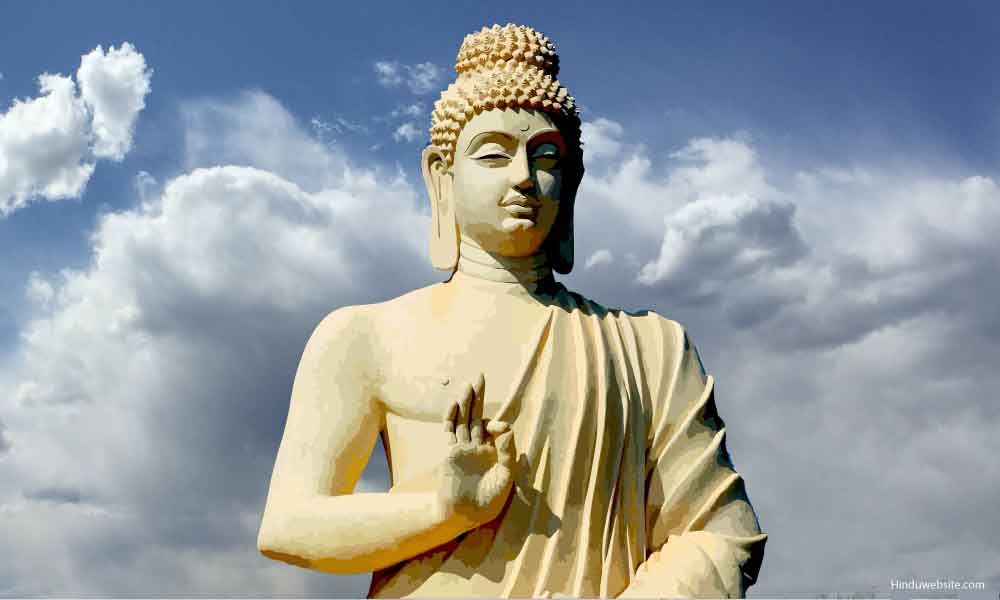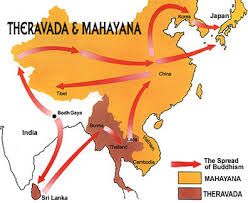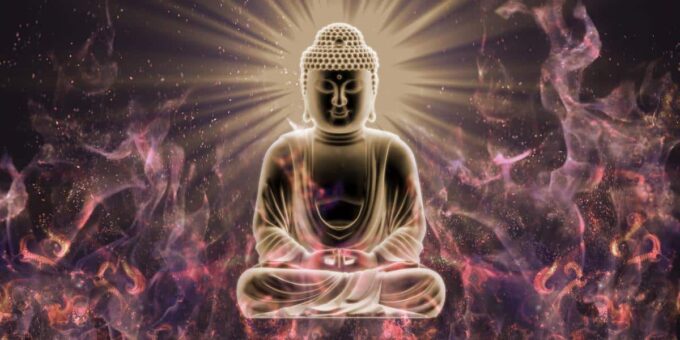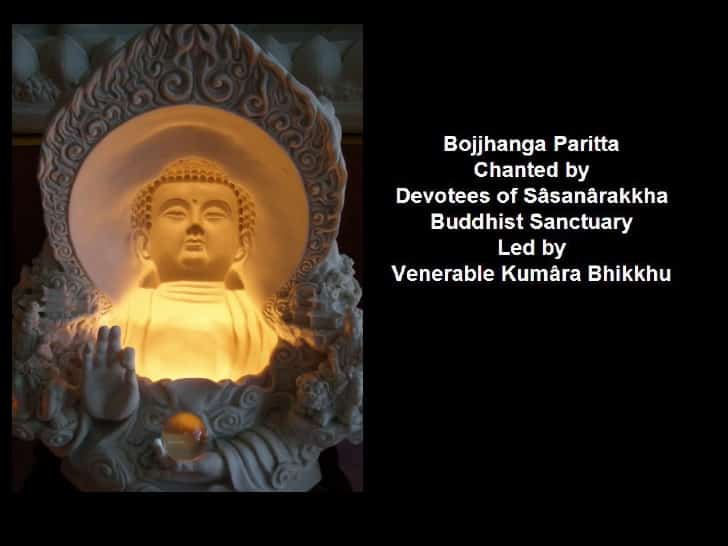Mahayana, ( Sanskrit: “Greater Vehicle” – literally, the “Greater Ox-Cart”) is a spiritual movement that arose within Indian Buddhism around the beginning of the Common Era and became by the 9th century the dominant influence on the Buddhist cultures of Central and East Asia. Arising out of schisms—about both doctrine and monastic rules—within Indian Buddhism, the Great Vehicle considers itself a more authentic version of the Buddha’s teachings. Mahayana Buddhism is sometimes called Northern Buddhism. It is mainly followed by monks and nuns, and is largely found throughout China, Japan, Korea, Mongolia, Nepal, Russia, Tibet, and Vietnam. It is difficult to talk about an unified canon for the Mahayana tradition as it is often assimilated by local beliefs and traditions. Mahayana broke into several sub-types:
– Zen (Cha’an), and Pure Land.
– Vajrayana, or Tantric Buddhism
– Nichiren developed in most recent times and is based on the White Lotus Sutra teaching of the Buddha.
The origins of Mahayana Buddhism remain obscure; the date and location of the tradition’s emergence are unknown, and the movement most likely took shape over time and in multiple places. The earliest sources for the tradition are the Mahayana sutras, scriptures that were first compiled four centuries after the Buddha’s death in the form of sermons said to have been delivered by the Buddha Shakyamuni.
Buddhism, like most Indian systems of thought, sees the world as a realm of transmigration, or reincarnation (samsara), from which one may escape by attaining nirvana. In the Mahayana tradition, the emphasis is less on nirvana and more on knowledge or wisdom, the mastery of which constitutes awakening.
Significant aspects of Mahayana Buddhism
The most distinctive teaching of the Mahayana is that the great compassion that is an inherent component of enlightenment is manifest in bodhisattvas (enlightenment beings) and emphasizes the importance of each follower living as a bodhisattva; these beings postpone nirvana (final enlightenment) in order to assist and guide those beings still suffering in the cycle of rebirths. The ideas of selflessness and compassion, and the desire to free all living beings from suffering are central to this life. This includes taking a vow to be reborn and helping others reach nirvana or enlightenment. They employ what the Mahayana calls “skillful means,” which is the ability to know the particular mental and emotional capacity of each individual, and to deliver guidance appropriate to those capacities.
Salvation
The goal is enlightenment, leading to Nirvana–liberation from cycles of rebirth and suffering–which is life. All are already endowed with Buddha-nature but need to come to realize fully that only the Ultimate Reality (Sunyata) is real (or nonconditional) and permanent. The Four Noble Truths and Eightfold Path show the way, along with worship of the essential Buddha. One must work to extinguish self: All worldly cravings, desires, and attachments, through loving-kindness, compassion, charity, moral conduct, wisdom, and meditation. Renouncing worldly possessions and goals is not necessary for the laity, if balanced. Buddha taught the middle path, moderation. Human and spirit world Bodhisattvas are sought for help in gaining enlightenment. Pure Land Mahayana Buddhists aim to find a place of eternal Nirvana in a paradisaical Pure Land, attainable by calling out the name of the Buddha ruler of the Pure Land.
Bodhisattva
For Mahayana Buddhism, awakening consists in understanding the true nature of reality. While non-Mahayana doctrine emphasizes the absence of the self in persons, Mahayana thought extends this idea to all things. The radical extension of the common Buddhist doctrine of “dependent arisal” (pratityasamutpada), the idea that nothing has an essence and that the existence of each thing is dependent on the existence of other things, is referred to as emptiness (Sunyata).
The bodhisattvas seek to understand this reality through wisdom (prajna) and to actualize it through compassion (karuna). They realize that since no individual has a “self,” there can be no real difference between themselves and others, and therefore their own liberation is not distinct from the liberation of all beings. They are thus “self-less,” both philosophically, in the sense of understanding the absence of self or essence in all things and persons, and ethically, since they act for all beings without discrimination.
Awakening
Mahayana refers to “awakening” as the key to being a bodhisattva. Meditation is the method used to achieve this knowledge. Essentially, this is the realization that dualities, such as good and evil or existence and non-existence are false. It also teaches that reality is made up of everything seen and unseen, and that our notion of reality is purely a convention of daily life. In Mahayana, the universe has no beginning in time, and there are infinite worlds that are all part of true reality. It also teaches that there is an infinite number of buddhas. This particular teaching is significant because it means that believers are not dependent only on devotion to Shakyamuni Buddha –the original Buddha –for liberation from suffering. As a result, followers venerated other buddhas and bodhisattvas, such as Amitabha, in the regions where Mahayana is dominant.
Upaya
Upaya is the Mahayana “doctrine of skillful means.” This approach to salvation –which for Buddhists is liberation from suffering and the cycle of reincarnation called samsara — allows individuals to use means that are appropriate for them but which may not appear to be right to other buddhists. The teachings explain that since the actions of a buddha, or bodhisattva, come from wisdom and compassion, whatever actions he takes to help another person, are justified by his superior insight.
Karma
The concept of karma is important to Mahayana Buddhists. In the more classical idea of karma, only an individual’s actions during his life could influence his future. However, Mahayana teachings suggest that the good karma accrued from good deeds might be transferable to others in need of liberation, such as a person’s deceased parents. This could prevent them from having to experience the pain of rebirth. Mahayana also teaches that karma affects believers’ acquisition of wisdom and enlightenment. Essentially this means that the more good karma, or merit, you create from your actions and thoughts, the more likely you are to achieve enlightenment.
Suffering
Life is suffering. Suffering (dukkha) results from this and past life greed, hatred, and ignorance, which, unless mitigated, returns as suffering (karma). Intense suffering may be viewed as the release of karma, hastening one’s liberation. Suffering is illusion or ignorance of one’s true nature as Buddha.
Photo credit: mahayanarecords




